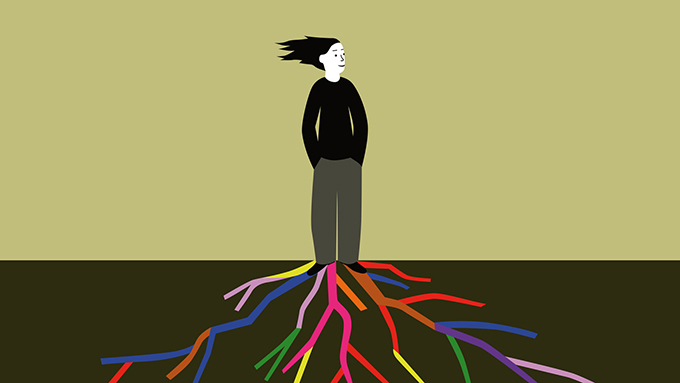
Increasingly frequent in media discourse and everyday language, the term resilience was said to have been used for the first time by Emmy Werner . This developmental psychologist focused in the 1980s and 1990s on the long-term consequences of stress occurring during the prenatal and perinatal periods, based on longitudinal research on 698 people from the island of Kauai in Hawaii, from their birth to adulthood.
In this research, what surprised the author was that a third of the children at risk had not experienced any particular problems during their childhood and had become happy and competent adults. Additionally, many of the children who experienced problems were able to bounce back into adolescence and adulthood. It is to describe these subjects as “vulnerable, but invincible” that Emmy Werner used the word “resilience”.
The definition of resilience proposed in 2001 by the Children’s Foundation and by the working group led by Michel Manciaux considers this notion as “… the capacity of a person, of a group, to develop well, to continue to project oneself into the future despite destabilizing events, difficult living conditions, and sometimes severe trauma.”
For psychology professor Marie Anaut , resilience involves “adaptation in the face of danger, normal development despite risks and pulling oneself together after trauma”. Let us also remember the definition of Boris Cyrulnik for whom resilience is “the ability to succeed, to live and to develop positively, in a socially acceptable manner, despite stress or adversity which normally carries the serious risk of an outcome negative”.
The importance of resilience has primarily been highlighted in the literature relating to child and adolescent development. It is often defined according to protective factors linked to the individual himself and his environment. Resilience factors have been noted in people described as having personal resources (self-esteem, self-confidence , self-discipline, courage and optimism in the face of adversity) or even possessing cognitive abilities superior to average, a sense of competence, an internal locus of control, a sense of humor, empathy and social skills.
Other factors would contribute to the protection of individuals: adaptability to change, autonomy, independence, problem-solving skills, the ability to give meaning to the event and religion. Family context also seems to play a role. Having warm parents, benefiting from their support, the absence of conflicts, the structuring of family life are factors conducive to good resilience.
Finally, note that social support from peers, professionals, extended family, teachers and neighbors must also be taken into account. It takes various forms such as benefiting from a comforting presence, advice or information likely to help to better understand the events or trials that must be faced.
The position that currently dominates the literature is to approach resilience in terms of process. This is then considered from a developmental perspective, that is to say that it depends on the stage of development in which the subject finds itself, which leads to differences in reactions depending on age, evolution , the psychic construction, the subject’s surroundings. It is not a “fixed” quality or personality trait of the individual, it can be subject to significant variations depending on the circumstances. Thus, resilience is not revealed in the daily life of life, but in the ordeal which alone is capable of mobilizing this resource, which must be drawn from deep within oneself.
Thus, to mobilize resilience processes, individuals must be confronted with aversive or traumatic events, involving violence, a physical or psychological break-in (for example, the loss of a loved one, an accident, an illness, etc.). It can also be an accumulation of aversive events or serious and repeated deficiencies, such as emotional neglect.
Resilience processes can be implemented in various situations which contribute to disrupting the individual’s balance adapted to their environment. Certain experiences arousing strong and negative emotions (such as fear, confusion, mistrust, etc.) could constitute risks for the well-being and mental balance of the individual. Thus, a wide variety of situations are likely to mobilize resilience processes, if indeed it can be mobilized.
Author Bio: Cyril Tarquinio is Professor of Clinical Psychology at the University of Lorraine
